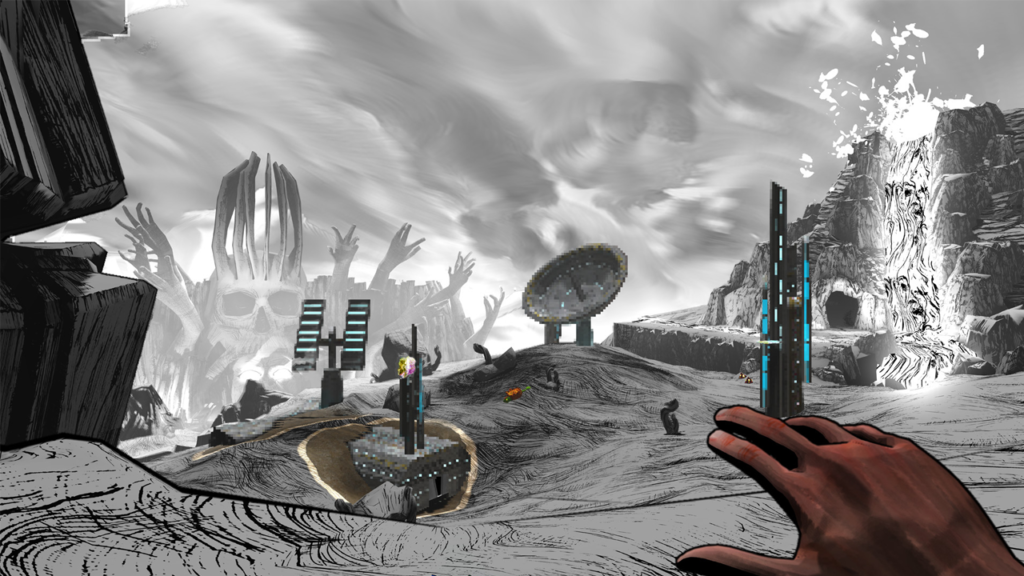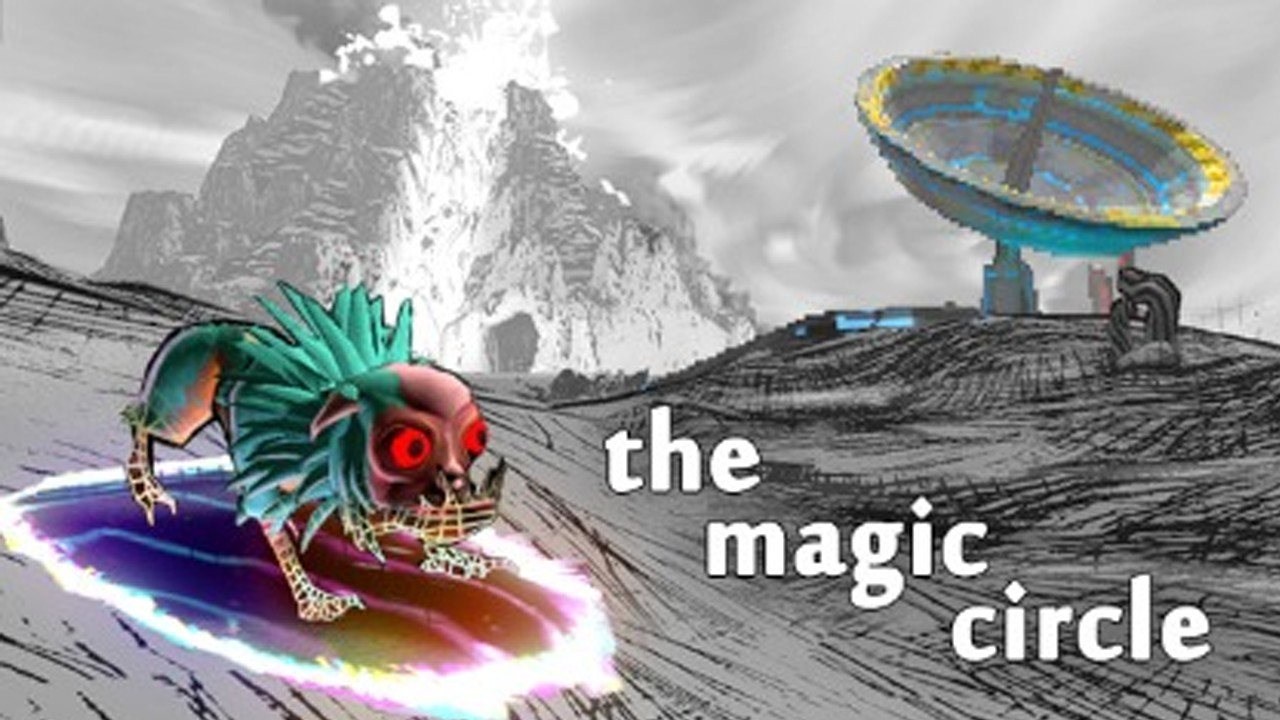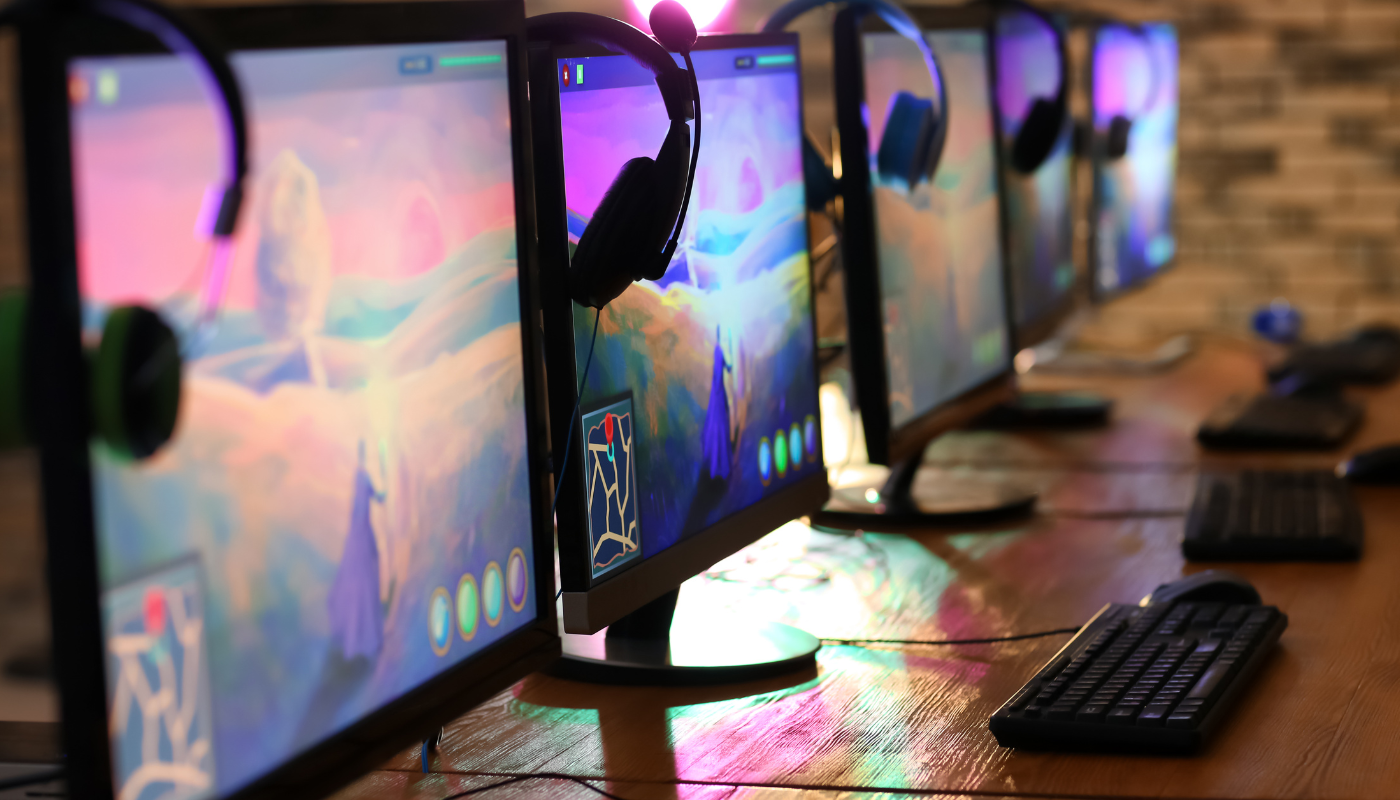In the realm of game design, the concept of the “magic circle” plays a pivotal role in defining the boundaries between the real world and the immersive universe of gameplay. This intriguing principle not only shapes the way players engage with games but also influences the creation and evolution of gaming environments. As we delve into the essence of the magic circle, we uncover its profound impact on player experiences and its significance in crafting captivating virtual worlds. Join us on a journey to explore the magic circle and its pivotal role in the art of game design.
Defining the Magic Circle Concept
The term Magic Circle emanates from the domain of game design, yet its implications stretch far into the broader realms of interactive media and user experience. Originating from the field of play theory, the concept was notably expounded by Johan Huizinga in his seminal work, “Homo Ludens,” where it was used to describe the boundaries that separate the world of play from the realm of everyday life. In the context of game design, the Magic Circle represents the metaphorical space in which the normal rules and realities of the world are temporarily suspended, and players are invited into an immersive experience governed by the rules and narrative of the game itself.
Understanding the Magic Circle is pivotal for game designers, as it underscores the importance of crafting an engaging, cohesive environment that can fully envelop the player. It’s not merely about the aesthetics or storyline but about creating a comprehensive world with its own logic, challenges, and rewards that entice the player to step away from their reality and immerse themselves in the game. The effectiveness of a game’s Magic Circle can significantly impact the player’s sense of presence and immersion, making it a critical element in the overall design process.
Furthermore, the concept of the Magic Circle has evolved with the advent of digital media, expanding its application beyond traditional games to include virtual and augmented reality experiences. In these spaces, the boundaries of the Magic Circle are both more literal and more permeable, offering new challenges and opportunities for designers to create deeply immersive and interactive worlds. The principles of the Magic Circle now inform a wide range of design practices, from the layout of virtual interfaces to the development of narrative structures and the implementation of interactive elements that engage the user’s senses and emotions in powerful, novel ways.
Additional insights into the Magic Circle concept reveal its significance in the balance between challenge and skill, the crafting of meaningful narratives, and the integration of interactive elements that enhance immersion. The Magic Circle’s boundaries are not just physical or visual but are also defined by the cognitive and emotional engagement of the player. Successful game design ensures that players feel a sense of progression, accomplishment, and connection to the game world, which in turn reinforces the integrity of the Magic Circle. By understanding and thoughtfully applying the principles behind the Magic Circle, game designers can create experiences that are not only entertaining but also meaningful and memorable.
| Aspect | Significance in Game Design | Examples |
|---|---|---|
| Rules | Define the boundaries and possibilities within the game. | Turn-based strategies, role-playing games (RPGs) |
| Narrative | Provides context and motivates player engagement. | Adventure games, story-driven quests |
| Interactivity | Engages players and makes the experience unique. | Puzzle games, interactive fiction |
| Immersion | Deepens the sense of presence within the game world. | Virtual reality (VR) experiences, immersive simulations |
| Challenge vs. Skill | Maintains player interest and satisfaction. | Platformers, strategy games, eSports |
The Origins of the Magic Circle

The concept of the Magic Circle in game design is more than just a term; it’s a fundamental principle that underscores the very essence of what makes games engaging and immersive. Its origins can be traced back to the Dutch historian and cultural theorist Johan Huizinga, who introduced the idea in his seminal work, “Homo Ludens,” published in 1938. Huizinga posited that play is a voluntary activity, separated from the real world by a virtual boundary that he dubbed the “Magic Circle.” This boundary demarcates the transition from the ordinary to the playful, a realm where the rules of the game supersede those of the everyday world.
The Magic Circle is not just a theoretical construct; it serves as a practical framework within which game designers craft experiences that captivate and engage players. By understanding and manipulating the boundaries of the Magic Circle, designers can create worlds that are at once separate from reality yet profoundly connected to the human experience. This duality allows players to explore, experiment, and express themselves in ways that are often restricted in the real world.
In modern game design, the Magic Circle has evolved beyond Huizinga’s initial conception. It now encompasses the psychological, narrative, and technological dimensions of gaming. Designers leverage these aspects to construct immersive experiences that transport players into alternate realities, encouraging them to adopt new identities, engage in complex problem-solving, and experience emotions as vivid and intense as those encountered outside the virtual realm.
| Aspect | Role in Magic Circle | Example |
|---|---|---|
| Rules | Define the boundaries and possibilities within the game | Chess rules |
| Narrative | Provides context and meaning to the player’s actions | Storyline of The Legend of Zelda |
| Technology | Enables and enhances the game experience | VR headsets |
| Psychology | Influences player engagement and satisfaction | Flow state in gaming |
| Design | Shapes the aesthetic and functional aspects of the game | Minecraft’s blocky visuals |
The Magic Circle’s origins lie not just in theoretical discourse but also in the practical application of crafting engaging game worlds. It stands as a testament to the intricate relationship between play and culture, highlighting how games act as a mirror to society’s values, conflicts, and aspirations. As game design continues to evolve, the Magic Circle will undoubtedly remain a cornerstone of the discipline, guiding designers in their quest to create immersive worlds that captivate the hearts and minds of players around the globe.
Magic Circle and Game Mechanics
The concept of the Magic Circle in game design is a fundamental principle that delineates the boundary between the game’s world and the real world. This invisible boundary encapsulates the game’s environment, rules, and narrative, creating a space where players can immerse themselves in the gameplay experience. Within this circle, game mechanics play a pivotal role in defining the dynamics of interaction and engagement. These mechanics are the tools and rules that guide the player’s actions and decisions, shaping the flow and outcome of the game. By understanding how to effectively integrate game mechanics within the Magic Circle, designers can enhance the immersive quality of the game, drawing players deeper into the game’s world.
Game mechanics are not just about controlling how players interact with the game world; they also serve to reinforce the player’s sense of presence within the Magic Circle. Elements such as point systems, level progression, and character development are not merely features; they are integral components that maintain the boundary of the Magic Circle, keeping the player engaged and invested in the game. The effectiveness of these mechanics in maintaining immersion is what separates a good game from a truly transformative experience. It is through the careful balancing and integration of these mechanics that the Magic Circle retains its potency, making the game an enclave of escapism and adventure.
However, the challenge lies in designing game mechanics that are both innovative and intuitive. Mechanics that are too complex can break the immersion, pulling the player out of the Magic Circle, while overly simplistic mechanics may fail to engage the player fully. The key is to design mechanics that complement the game’s world and narrative, encouraging players to explore, experiment, and experience the game’s world as if it were their own. By doing so, game designers can ensure that the Magic Circle remains an unbroken sphere of immersion, captivating players and transporting them into the game’s universe.
Enhancing Immersion through Innovative Mechanics
In the realm of game design, the pursuit of innovative game mechanics is a continual challenge. Designers strive to create mechanics that not only fit seamlessly within the Magic Circle but also elevate the player’s experience. This involves a delicate balance of creativity and functionality, where the mechanics must serve the narrative and gameplay in equal measure. The ultimate goal is to design mechanics that are fresh yet familiar enough to be intuitive, providing a pathway for deeper engagement and immersion within the game’s world.
Exploring the Balance Between Innovation and Intuition
Finding the perfect balance between innovative mechanics and intuitive gameplay is crucial for maintaining the integrity of the Magic Circle. This balance ensures that players are continuously engaged, without being overwhelmed by complexity or underwhelmed by simplicity. It’s a dynamic equilibrium that requires constant refining and iteration, as what works for one game may not work for another. The success of this endeavor is measured by the player’s ability to lose themselves in the game, fully embracing the world within the Magic Circle.
| Mechanic Type | Example | Impact on Immersion |
|---|---|---|
| Point Systems | Experience Points (XP) | Encourages progression and skill development |
| Level Progression | Unlocking new levels/areas | Provides a sense of achievement and exploration |
| Character Development | Customization options | Increases personal connection to the game |
| Quests/Challenges | Story-driven missions | Enhances narrative engagement |
| Interactive Environments | Puzzles integrated into the game world | Makes the world feel alive and responsive |
Psychological Impact of the Magic Circle

The concept of the Magic Circle in game design is pivotal in creating an immersive experience for players, delineating the boundary between the real world and the game world. Within this circle, players are encouraged to explore, interact, and fully engage with the game’s environment, free from the constraints of reality. The psychological impact of this delineation is profound, affecting both the cognitive and emotional responses of players. By stepping into the Magic Circle, players are not just entering a fictional realm; they are also stepping into a space where the usual rules of society and physics don’t always apply, allowing for a unique form of escapism.
This escapism can lead to a variety of psychological effects, including increased creativity, improved problem-solving skills, and enhanced emotional well-being. The Magic Circle offers a safe space for players to experiment with different identities and scenarios, facilitating a form of play that is both liberating and empowering. Moreover, the immersive nature of this experience can significantly enhance engagement and motivation, making the game more enjoyable and rewarding. However, it’s important to recognize that the immersion can also have negative consequences, such as excessive escapism or difficulty in distinguishing between game and reality for some individuals.
Understanding the psychological impact of the Magic Circle is crucial for game designers, as it can inform the creation of more engaging and emotionally resonant gaming experiences. By carefully crafting these immersive worlds, designers can not only entertain but also provide meaningful and impactful experiences that resonate with players on a deeper level.
- Increased creativity and imagination
- Improved problem-solving skills
- Enhanced emotional well-being
- Greater engagement and motivation
- Potential for excessive escapism
Challenges and Critiques of the Concept
The concept of the Magic Circle in game design is pivotal in understanding how games function as separate realities, offering players an escape from the mundane into worlds of endless possibilities. However, this concept isn’t without its challenges and critiques. One significant challenge is maintaining the integrity of the Magic Circle in the face of external interruptions. In today’s hyper-connected world, notifications, calls, and even the player’s own thoughts can pierce this invisible boundary, potentially disrupting the immersive experience. Designers must constantly innovate to keep players engaged and prevent the real world from intruding upon the game world.
Another critique of the Magic Circle concept arises from its implied rigidity. Critics argue that the strict separation between the game world and the real world neglects the impact that each can have on the other. Games often influence our real-world perspectives, decisions, and emotions, just as our real-life experiences can shape how we interpret and engage with games. This interplay suggests that the boundary of the Magic Circle is more permeable than originally thought, challenging designers to consider how external factors might affect gameplay and player engagement.
Furthermore, the concept has been critiqued for its potential to foster isolation and escapism in unhealthy ways. While games offer a valuable outlet for creativity and stress relief, an overreliance on these virtual worlds can lead to social isolation and detachment from reality. Game designers are thus faced with the ethical challenge of creating engaging, immersive experiences that also encourage healthy gaming habits among their players.
Exploring the Permeability of the Magic Circle
The notion that the Magic Circle is a completely separate entity from the real world is increasingly being challenged. This permeability suggests a dynamic interaction between game worlds and the real world, where elements from each can cross over and influence the other. Understanding this fluid boundary can help designers create more engaging and meaningful gaming experiences that resonate with players on a deeper level, acknowledging the impact of external influences.
A New Perspective on Game Design
Recognizing the challenges and critiques of the Magic Circle concept invites a new perspective on game design. It encourages designers to think about how games can be both an escape and a reflection of reality, offering experiences that are not only immersive but also enriching. This involves considering the social, emotional, and psychological impacts of gaming, ensuring that games contribute positively to the player’s well-being and sense of connection with the world.
- Maintaining Immersion in the Age of Distraction
- Acknowledging the Impact of External Realities on Gameplay
- Encouraging Healthy Gaming Habits
- Designing for Meaningful Real-World Impact
- Understanding the Ethical Implications of Game Design
This discussion on the challenges and critiques of the Magic Circle in game design highlights the complexity of creating immersive, engaging, and ethically responsible games. By exploring these topics, game designers can better navigate the delicate balance between escapism and reality, ensuring that games remain a source of joy, inspiration, and meaningful connection.
As we continue to push the boundaries of what games can be, it’s crucial to remember the power they have to shape perspectives, build communities, and bridge the gap between the fantastical and the tangible. The Magic Circle, while not without its flaws, remains a fundamental concept in understanding and enhancing the player’s experience.

Is a game developer and writer with over seven years of experience in the gaming industry. Specializing in game design, development trends, and emerging technologies. He has worked on indie game projects and larger development teams, sharing his insights to help aspiring developers navigate the evolving world of game creation. Ethan’s articles focus on practical tips, game mechanics, and tools to inspire creativity in the gaming community.






